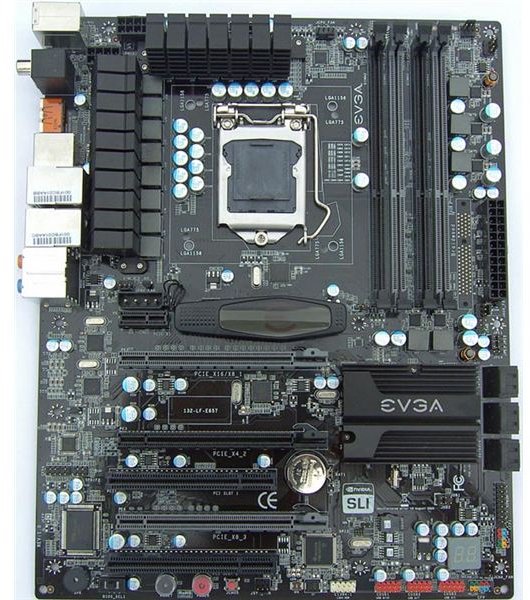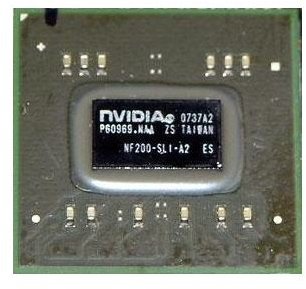The nForce 200 Chip Explained
The Ninja Chip
While Core i5 has gained a great deal of press for its high performance, reasonable price, and energy efficiency, not all the news about the new line of processors from Intel has been positive. There have been some comments about the on-board PCI controller, which is restricted to 16 PCI Express lanes. That’s no improvement over the P45 chipset, and as a result a P55 motherboard isn’t typically a good choice for those who wish to use multiple GPUs.
There is, however, a solution to this restriction. It is known as the Nvidia nForce 200 chip. The nForce 200 chip was created over a year ago as a means of providing SLI functionality to chipsets it did not produce. This was regarded as a protective measure by some who felt that Nvidia was beginning its exit of the chipset business, but needed to ensure that SLI would still be available to Nvidia customers. Specifically, that the ability to use (and therefore reason to buy) multiple graphics cards would still be available. With Nvidia unable to make its own chipsets because of an Intel lawsuit, the nForce 200 chip allows full bandwidth for two card SLI setups on the P55 chipset.
What is the nForce 200?
The nForce 200 chip is a small piece of hardware which is entirely separate from the other components of the motherboard. It is quite small, well below the size of a dime, so those who are worried that motherboards equipped with the nForce 200 chip will require more cooling than those without can put their fears to rest. Because the nForce 200 chip is an independent piece of hardware, it can be inserted into any motherboard from any manufacturer. And it has been. In the Best P55 Motherboards article I gave the nod to the EVGA P55 FTW200 partially because it included the nForce 200 chip. Other motherboards, such as the ASUS P7P55 WS Supercomputer also use the nForce 200.
The nForce chip itself supports 32 PCIe Express 2.0 lanes. This means that it effectively doubles the PCI Express bandwidth which is normally available on a P55 motherboard and it allows two PCIe video cards to work in SLI at full x16 speed. This means that using two video cards together won’t incur any performance penalty due to limited PCI Express bandwidth.
Interestingly, it does not appear that the nForce 200 chip negates the use of ATI video cards in Crossfire. The manuals of motherboards using the chip, such as the mentioned P7P55 WS Supercomputer, make no mention of the nForce chip being restricted to use with SLI. Presumably, Crossfire pairings will run at the x8 lanes each provided by the P55 chipset itself.
A Value Proposition

For Nvidia, the nForce 200 chip is an admission of defeat is painful medicine. It allows them to sell un-bottleneched multiple graphics cards solutions, but they would probably rather be selling whole chipsets. Nvidia had trouble competing in the chipset space with Intel and AMD pushing their own chipsets so aggressively even before the lawsuit from Intel got rolling.
For buyers of the P55 chipset, however, the nForce 200 offers an interesting value proposition. While motherboards like the FTW200 and P7P55 WS Supercomputer are certainly expensive for a P55 motherboard, they offer a buffet of features. Although most users will be perfectly happy with a $110 dollar Gigabyte P55M-UD2, some users want more, either because they need the features or because they enjoy toying with them. The FTW200 costs $289.99, for example, but has many of the features of the EVGA E760 CLASSIFIED X58 motherboard, which costs $400 dollars.
Currently, there are only a few P55 motherboards the use the nForce 200 chip. With luck, that number will increase in the future, as the nForce 200 chipset corrects the most glaring weakness of the P55 chipset.
